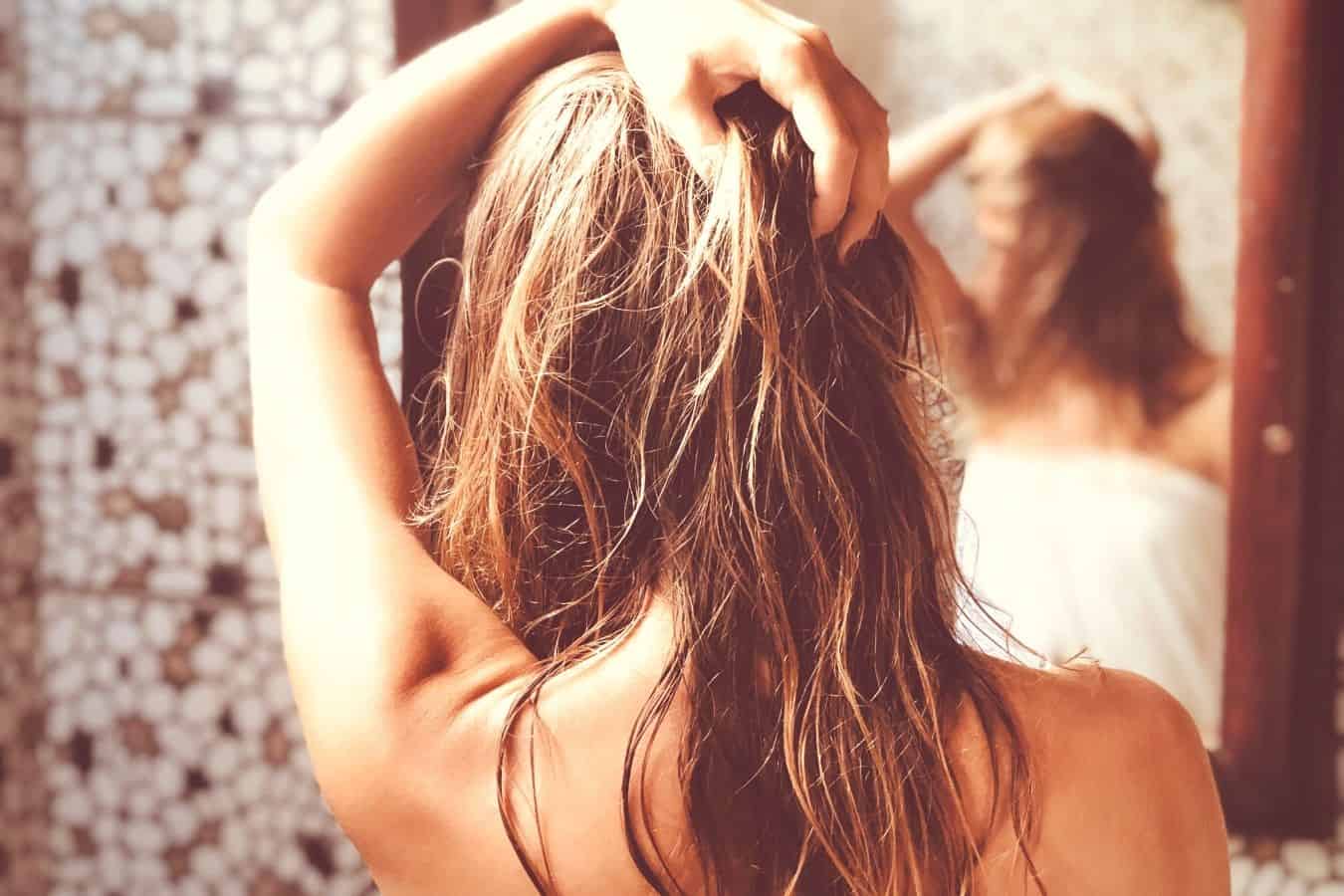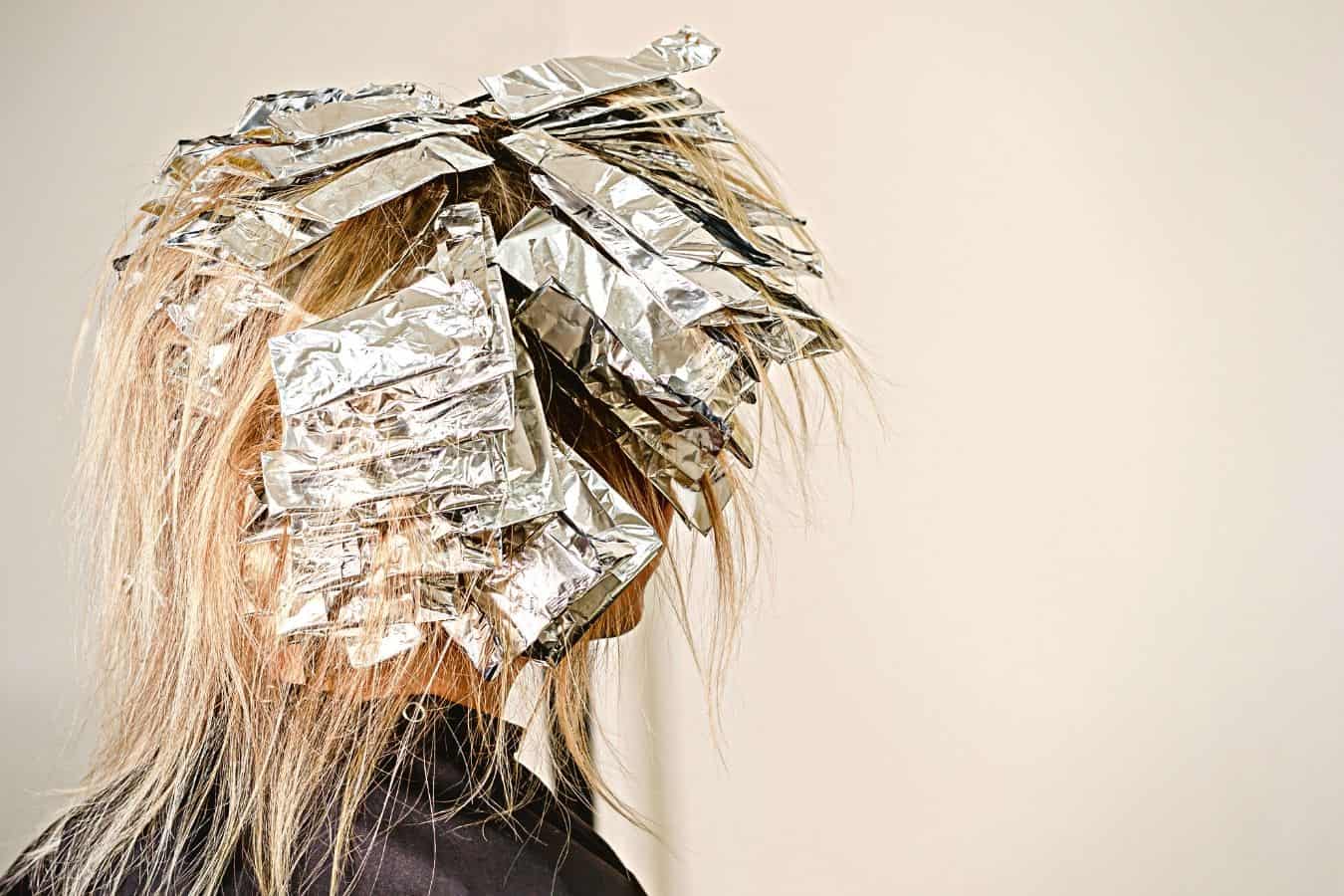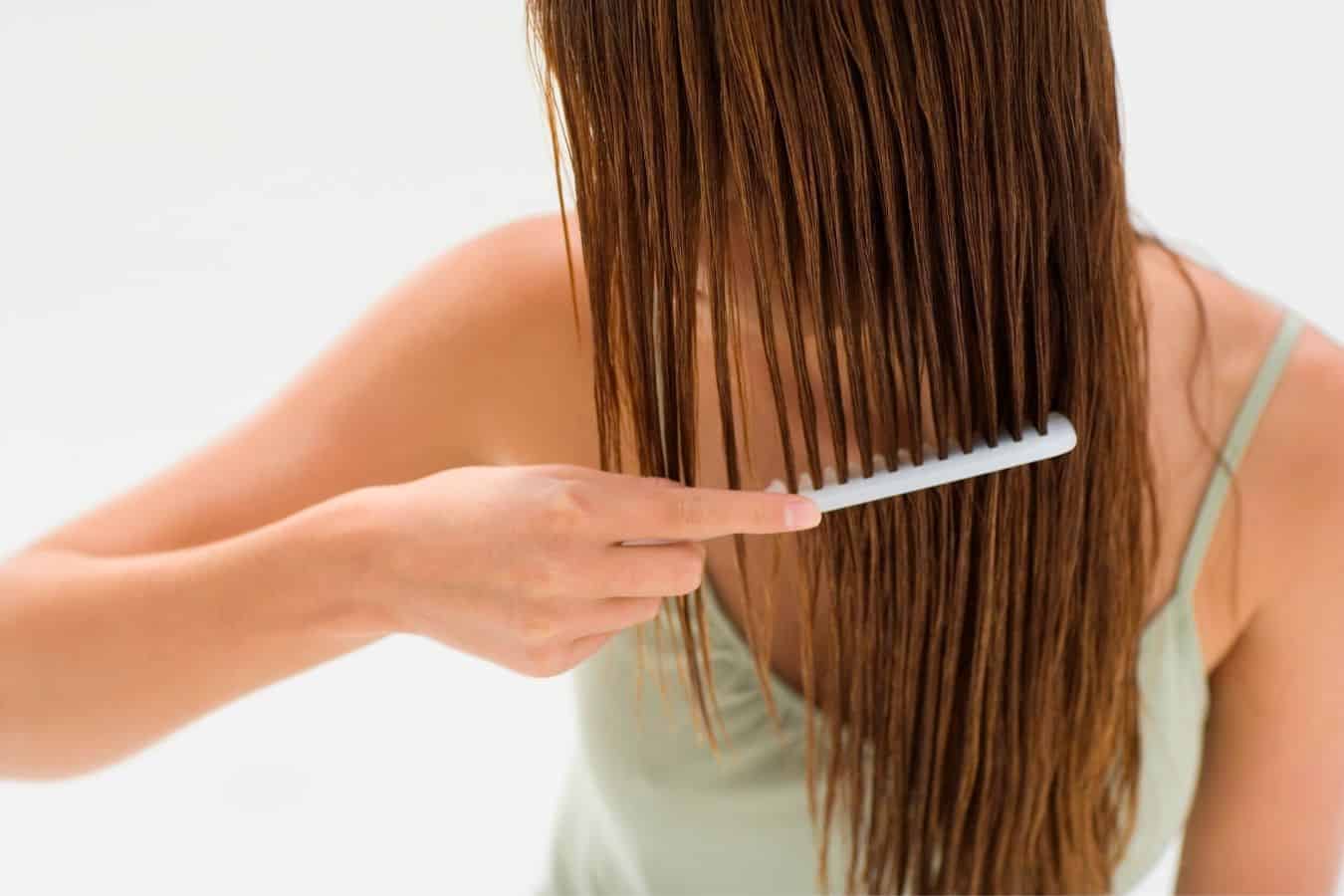Whether you’re looking to add a few highlights to your hair or go platinum blonde, bleaching your hair at home can be tempting. But do you know the do’s and don’ts? For example, what happens if you bleach damp hair? Read on to find out.

When bleaching damp hair, the cuticle is lifted and the bleach can easily penetrate the cortex where the bleaching process begins. This process will not significantly reduce hair color because the bleach is diluted with water. While it is possible to bleach damp hair, it is recommended to bleach dry hair for more dramatic results.
What Is Hair Bleaching
Hair bleaching is a chemical coloring technique that removes color from hair.
An alkaline agent is applied to open up the hair cuticle followed by an oxidizing agent that strips the hair of its natural melanin.
The longer the oxidant is left on the hair, the more melanin is extracted from the hair, resulting in a lighter shade.
Can You Bleach Freshly Washed Hair
The short answer is no. There are two main reasons why this is not advisable.
Firstly, the natural oils and sebum in the hair protect the scalp during the bleaching process. In fact, it is healthier if the hair is a little dirty before bleaching.
Secondly, clean hair prevents bleach from spreading evenly.
You should of course avoid bleaching your hair if you have a lot of product in it like hairspray or gel as the chemicals can prevent the bleach from working properly.
Also Read: How To Use Coconut Oil Before Bleaching Your Hair
What Happens If You Bleach Damp Hair

When you apply bleach to damp hair, a coloring technique known as wet balayage slows down the bleaching process and the results are less dramatic.
This applies to both freshly washed hair and hair that has been wet for the bleaching process.
Why Do Colorists Bleach Damp Hair
Colorists may choose to bleach hair when it is wet to soften the lightening effect.
The moisture in the hair dilutes the bleach, which in turn causes a color change.
The water can also help to evenly distribute the bleach. Remember that the hair should be wet, not washed.
Bleaching wet hair creates brighter tips. Since ombre is still a hot trend, clients who opt for a softer color change in the ends of their hair can benefit from this technique.
The results are not as loud as traditional dry hair bleaching.
Additionally, dry bleaching causes breakage in the hair where bleaching damp hair may help with this problem.
Is Bleaching Wet Hair Harder On Your Hair
Bleaching can cause serious damage if not used properly.
Hair is most sensitive when it is wet. Wet hair prevents the bleach from penetrating the cortex. This means that the hair is not completely decolorized.
Bleaching wet hair may prevent it from becoming frizzy and dry.
While the dampness in the hair may protect the cortex and cuticle during the bleaching process, hair is still very fragile when wet, thus bleaching damp hair may not be as beneficial if the colorist does not take extra caution when bleaching.
If, however, the colorist is a professional with experience, then bleaching damp hair may help protect the hair against damage.
When Is It Okay To Bleach Wet Hair
If the goal of bleaching is to create a subtle color change, then wet balayage is ideal. This is a good technique used to lift the hair tone by a shade or two.
Bleaching damp hair may produce faster results in a shorter amount of time. For this reason, a colorist may opt to bleach hair when it is wet.
Should You Bleach Your Hair At Home
Bleaching is a very tedious process.
Ask any hairdresser and he will advise you never to bleach your hair at home. The main reason most hairdressers advise against it is that it causes hair breakage.
Also, the hair can become blotchy. Or even worse, it will turn orange and yellow.
Additionally, bleaching mistakes could lead to hair that is brittle or burns to the scalp.
Also Read: How Soon Can I Bleach My Hair Again? Answered
Best Practice Tips For Bleaching Damp Hair

Even though it is not advisable to bleach your hair at home, it is always exciting to give your hair a blonde make-over.
Here are some tips in case you can not afford the price of a visit to the hairdresser:
1. Hair Health
Before attempting to bleach your hair, consider the overall health of the hair. If you have permed, colored, or highlighted hair, bleaching may not be the right choice.
If the hair is already brittle or damaged, you should not bleach for a while.
2. Hair Care
It is important to prepare the hair for the brutality it will face. If possible, avoid processing the hair or adding other hash dyes for at least three months before bleaching.
3.Avoid Chemicals
It’s important to take it easy on your hair in the two weeks leading up to bleaching. This includes not using hot styling tools that heat up the hair strand a lot.
Straighteners, hairdryers, curling irons, and curlers strip the hair of its natural moisture. Also, avoid hair products that contain sulfates or alcohol, as these will only dry out the hair even more.
4. Conditioning
Moisturize your hair before bleaching by applying conditioner frequently.
For better results, leave the conditioner on overnight two to three times a week. Do this over a period of two to three weeks before bleaching. Hair masks also restore moisture to the hair.
In a 2019 study, it was found that adding coconut oil and olive oil to hair strands protected the hair and is an effective way to add moisture to the hair.
5. Don’t Wash
Do not wash your hair before bleaching. This will strip the hair of its natural oils and weaken the bleaching process. Avoid washing your hair a day or two before bleaching.
6. Parting Hair
Part the hair away from the crown into sections. Part the hair down the middle first. Then part each section on each side of the head into two or three smaller sections.
7. Mix The Bleach
Only after the hair is prepped and parted should you apply the bleach mixture.
Sweep the mixture onto the hair from the tips towards the roots. Also, start with the lower sections and work your way up.
8. Timing
It is recommended that you do not leave the bleach on your hair for more than 30 minutes. However, some hairstylists advise leaving it on for up to 45 minutes.
It’s better to be safe than sorry, especially if it’s your first time. Cover the bleach with a shower cap and let it sit for up to 30 minutes.
Check it often, especially if your hair is naturally lighter, as it can set faster.
9. Washing
After the waiting period, wash off the bleach. Be careful when working with the hair.
Use a towel and pat the hair dry. Never rub it dry. Comb the hair out with a coarse-toothed comb.
Divide the hair into sections again. Start at the bottom section and comb the hair from the ends to the roots.
It may take a little longer, but your hair will thank you. Using a wide-toothed comb will assist if the hair is very knotty after washing and prevent further breakage.
Disclaimer: This site is not intended to provide professional or medical advice. All of the content on LovedByCurls.com is for informational purposes only. All advice should be followed at your own discretion. Ingredients may change at any time so always check the product label before using. Check our full disclaimer policy here.
